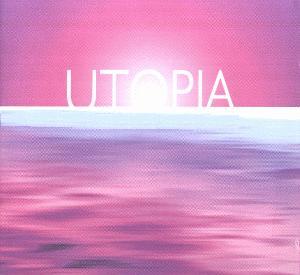Posted: April 14, 2005 -
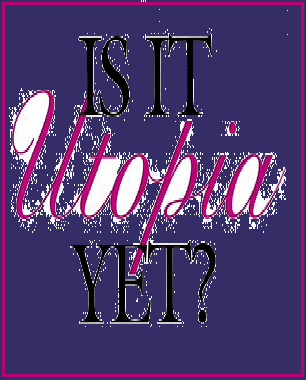
Was the Revolutionary Monsanto House
(MHOF project) to be a Reality?
Science Fiction meets with Utopian Reality?
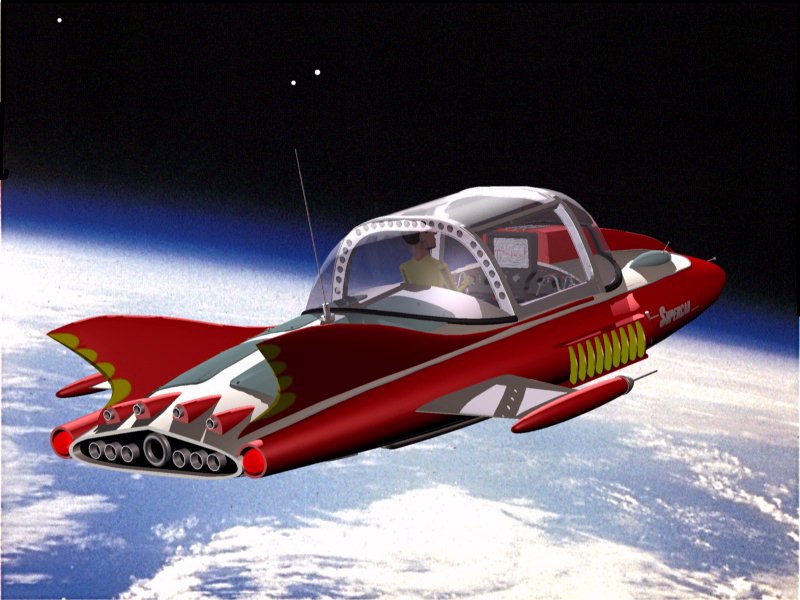
A study of looking into the future and its practical applications, as Video Game Environments also look into the future, Walt Disney has had some pretty interesting thoughts about an Utopian Future and the Urban Society with his Experimental Waltopia.
Fortress Of Utopia
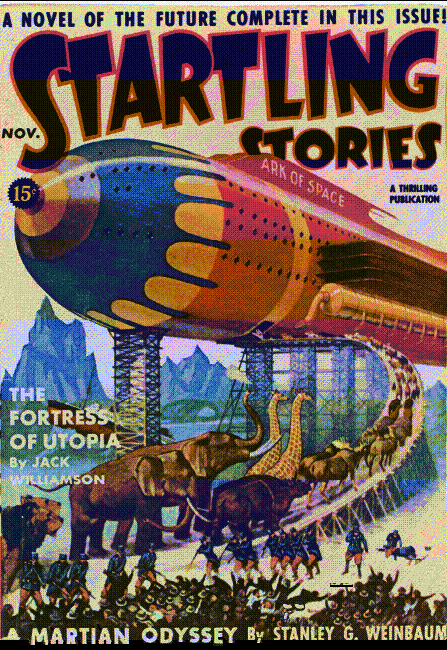
Exploration Space Ship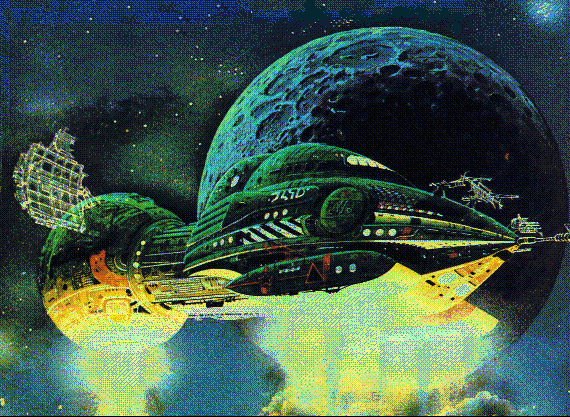
Space/Airplane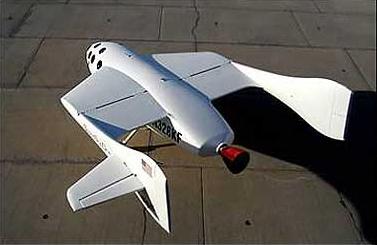
Back to: Walter Day Conversations
------ Click here to bookmark this page! ------

Was the Revolutionary Monsanto House
(MHOF project) to be a Reality?
Science Fiction meets with Utopian Reality?

A study of looking into the future and its practical applications, as Video Game Environments also look into the future, Walt Disney has had some pretty interesting thoughts about an Utopian Future and the Urban Society with his Experimental Waltopia.
Fortress Of Utopia

Exploration Space Ship

Space/Airplane

------ Click here to bookmark this page! ------
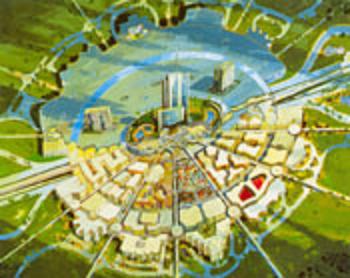 Experimental Prototype Community of Tomorrow
Experimental Prototype Community of Tomorrow
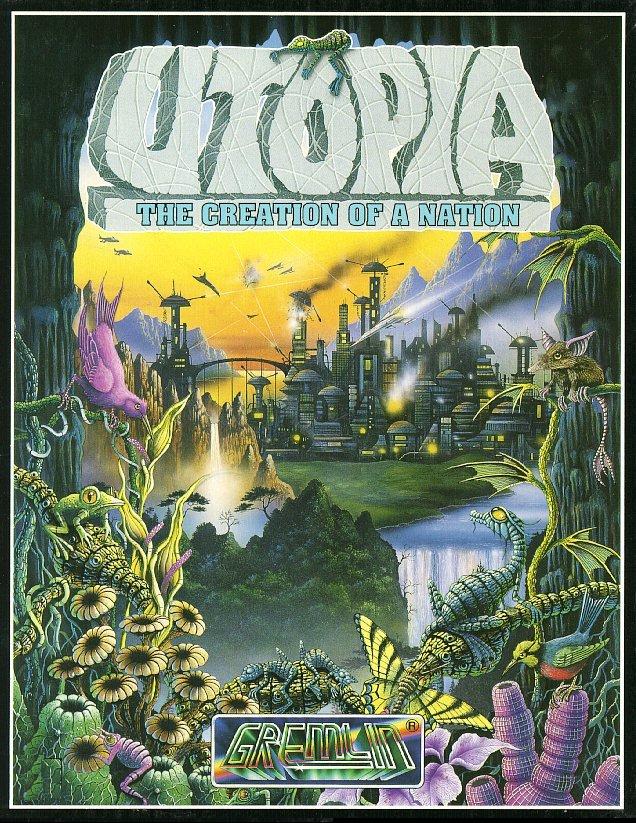
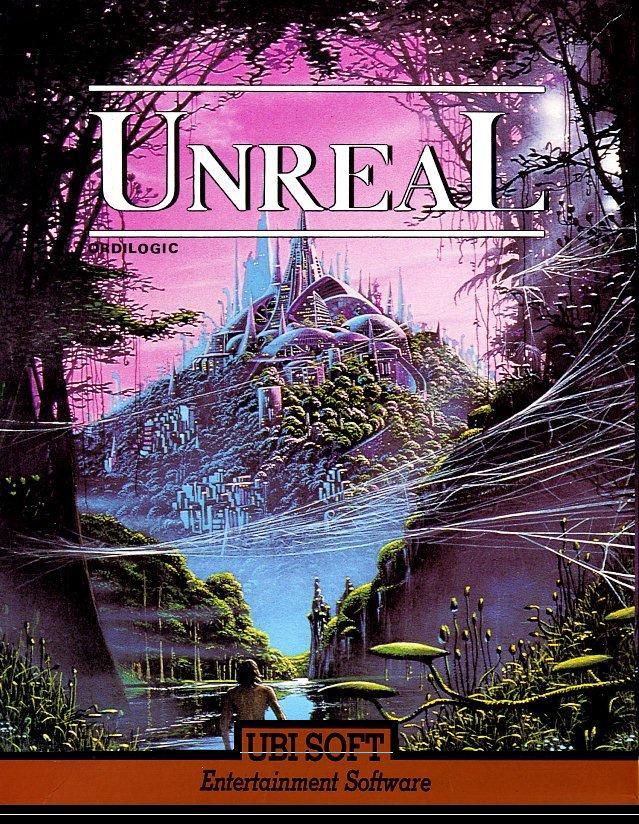
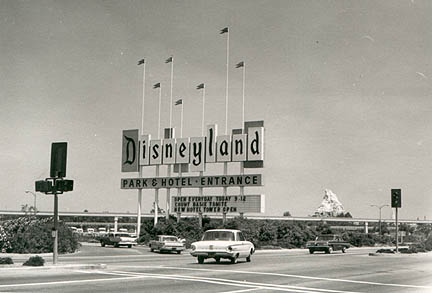
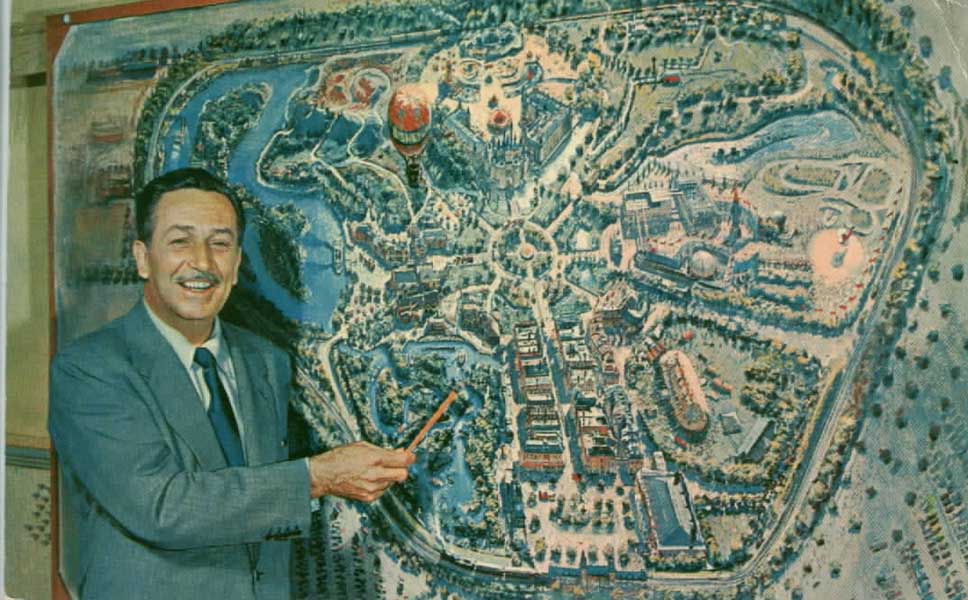
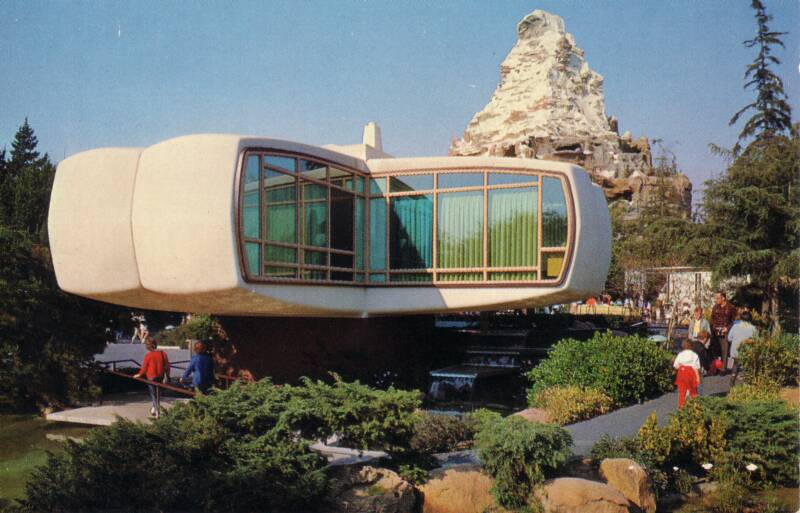
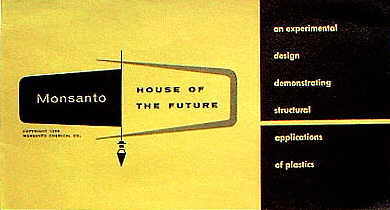
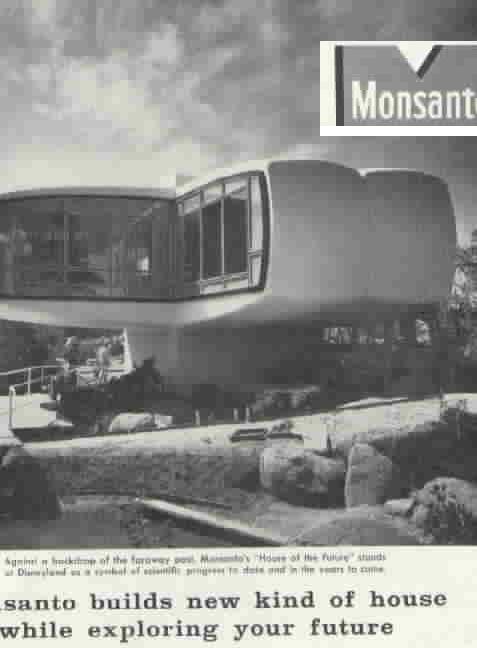 The Many Uses of Monsanto Plastics
The Many Uses of Monsanto Plastics
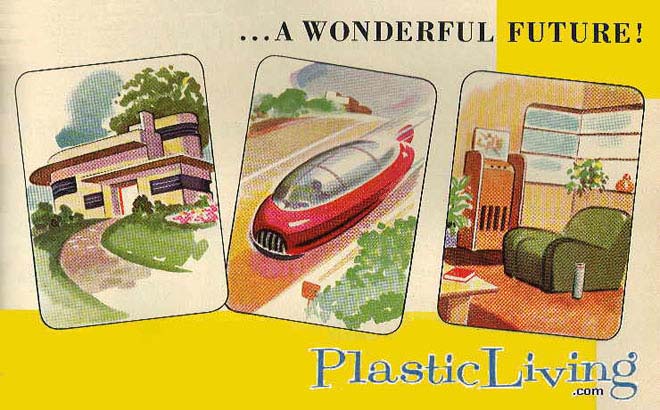 Monsanto House Interior
Monsanto House Interior
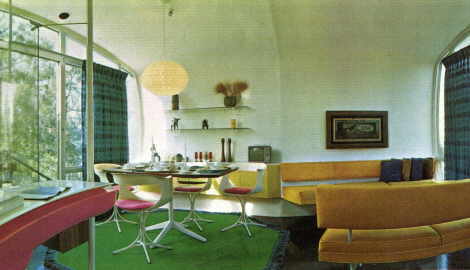
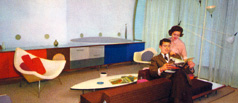 The never-before-seen pioneer developments inside the House of the Future include
imaginative new electronic and mechanical aids to man's health, convenience and
pleasure.
Disneyland guests visiting the ultra-modern development will find such features as a
microwave cooking range; an ultra- sonic dishwasher housed in a structure which also
serves as a desk, communications system center, garbage disposer and work surface, and
an adjustable electronic mount which allows the raising and lowering of lavatory sinks
to the height of adults or small children.
Two central systems are the climate control and communications centers. The climate
control regulates individual room temperature and humidity, purifies air, eliminates
undesirable odors and adds pine, sea air or flower scents. In communications,
push-buttons replace the telephone dial; screens permit the user to see the person
at the other end of the line or callers at the front door.
These are but a few features of Monsanto's House of the Future. You will also be
interested in its interior design and custom furnishing, color schemes and decorating,
as well as the landscape architecture keynoted by the effects of water and plants.
Upon entering the home, a voice would state "Welcome to Monsanto's Home of the
Future", and continue to cover the details of construction, which was almost
entirely of plastics. Monsanto sponsored the exhibit, but the house itself
was built at MIT and remained at Disneyland until it was demolished. A giant
wrecking ball was brought in, but bounced off the sturdy plastic construction.
A crew of several men had to go in and demolish it by hand, dragging most of
it away. Unfortunately, none of the original building was ever salvaged.
Marvin Goody and Robert Whittier
The never-before-seen pioneer developments inside the House of the Future include
imaginative new electronic and mechanical aids to man's health, convenience and
pleasure.
Disneyland guests visiting the ultra-modern development will find such features as a
microwave cooking range; an ultra- sonic dishwasher housed in a structure which also
serves as a desk, communications system center, garbage disposer and work surface, and
an adjustable electronic mount which allows the raising and lowering of lavatory sinks
to the height of adults or small children.
Two central systems are the climate control and communications centers. The climate
control regulates individual room temperature and humidity, purifies air, eliminates
undesirable odors and adds pine, sea air or flower scents. In communications,
push-buttons replace the telephone dial; screens permit the user to see the person
at the other end of the line or callers at the front door.
These are but a few features of Monsanto's House of the Future. You will also be
interested in its interior design and custom furnishing, color schemes and decorating,
as well as the landscape architecture keynoted by the effects of water and plants.
Upon entering the home, a voice would state "Welcome to Monsanto's Home of the
Future", and continue to cover the details of construction, which was almost
entirely of plastics. Monsanto sponsored the exhibit, but the house itself
was built at MIT and remained at Disneyland until it was demolished. A giant
wrecking ball was brought in, but bounced off the sturdy plastic construction.
A crew of several men had to go in and demolish it by hand, dragging most of
it away. Unfortunately, none of the original building was ever salvaged.
Marvin Goody and Robert Whittier
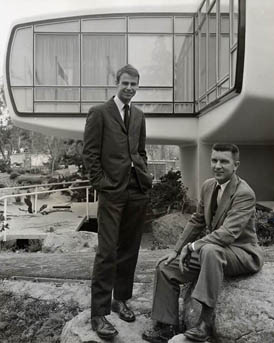
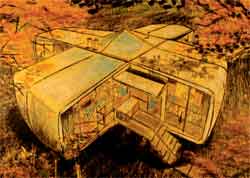 The House of the Future That Wasn't
The House of the Future That Wasn't 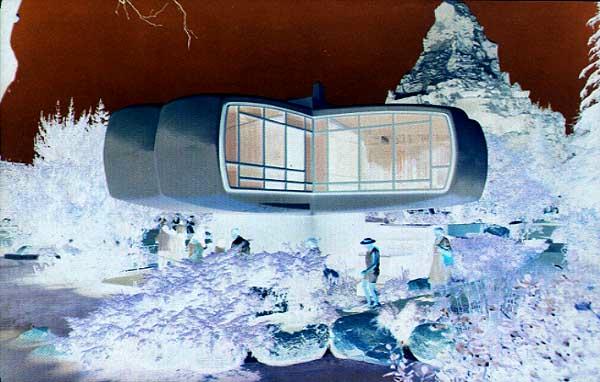
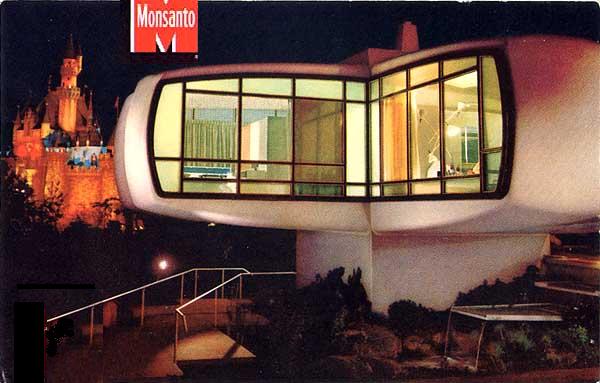
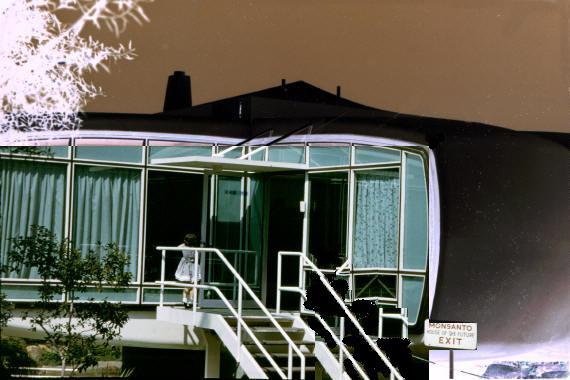
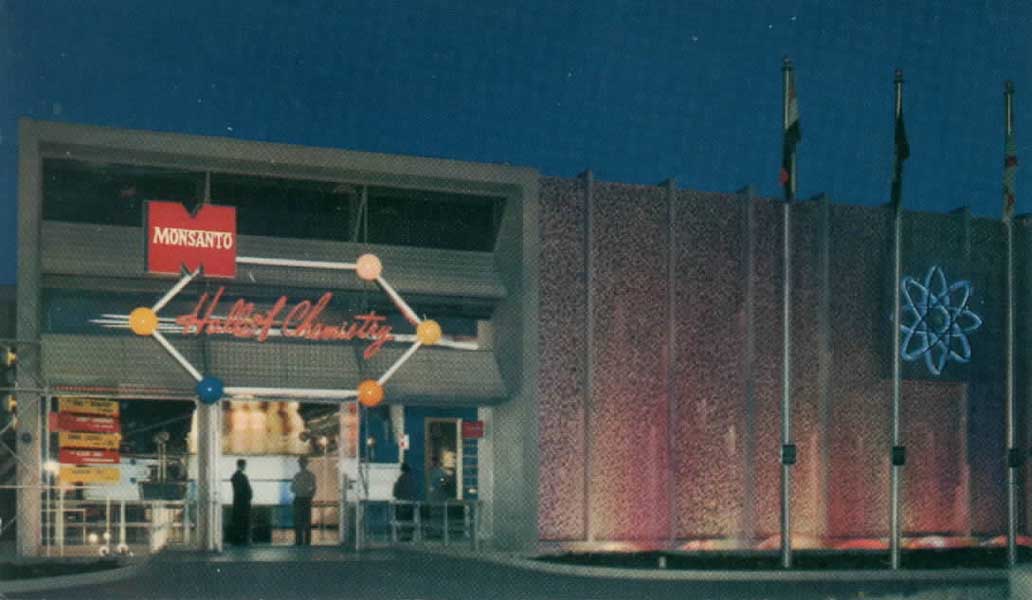 Disneyland Monsanto Plastics Exhibit
Disneyland Monsanto Plastics Exhibit
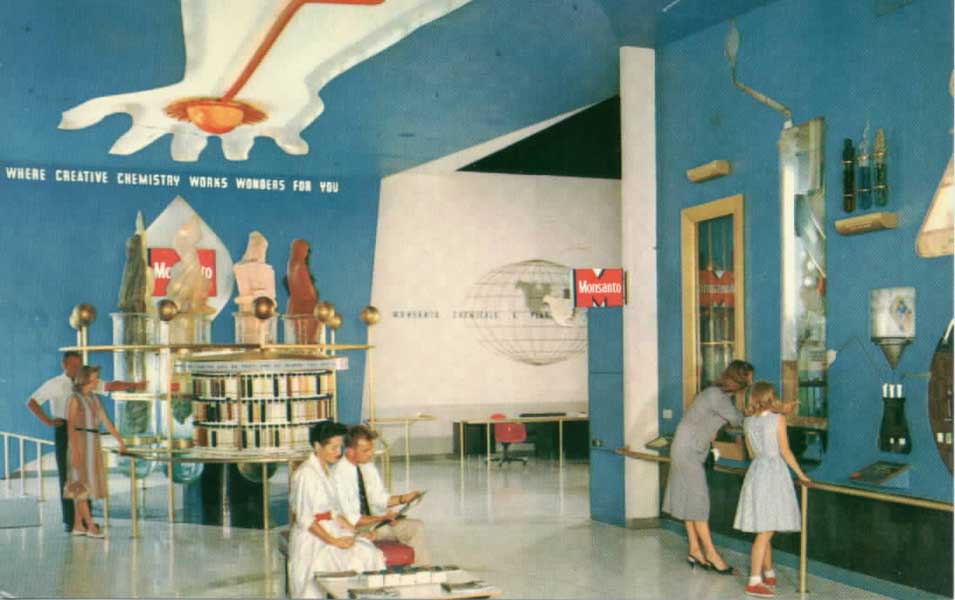 Disneyland Monsanto Plastics Exhibit another Angle
Disneyland Monsanto Plastics Exhibit another Angle
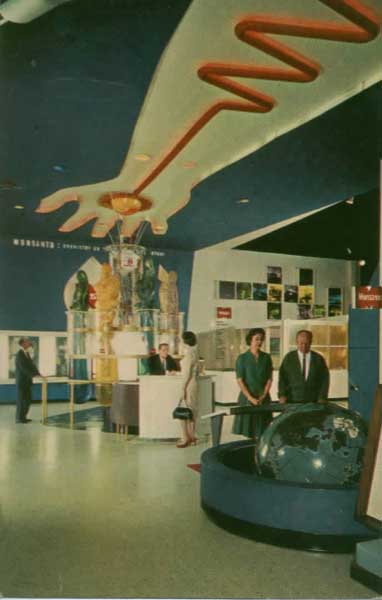 Hall of Chemistry
Hall of Chemistry
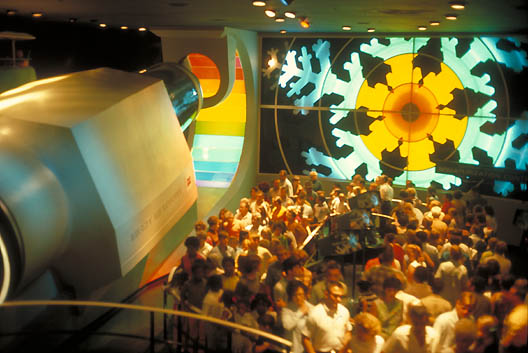 Monsantos Mighty Microscope
Monsantos Mighty Microscope
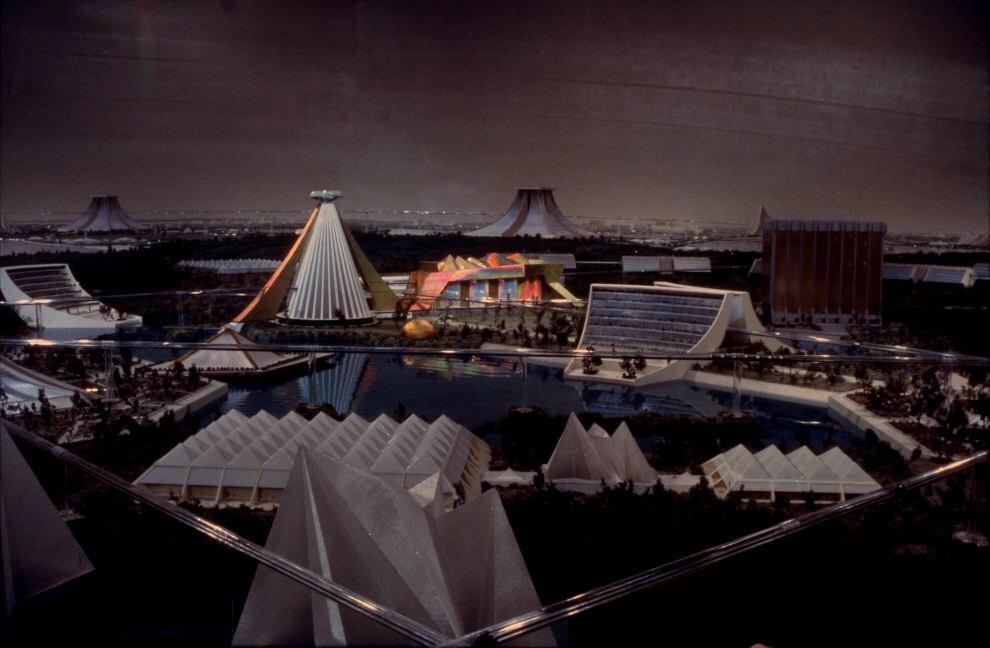 --------------------------------------------------------------------------------
--------------------------------------------------------------------------------
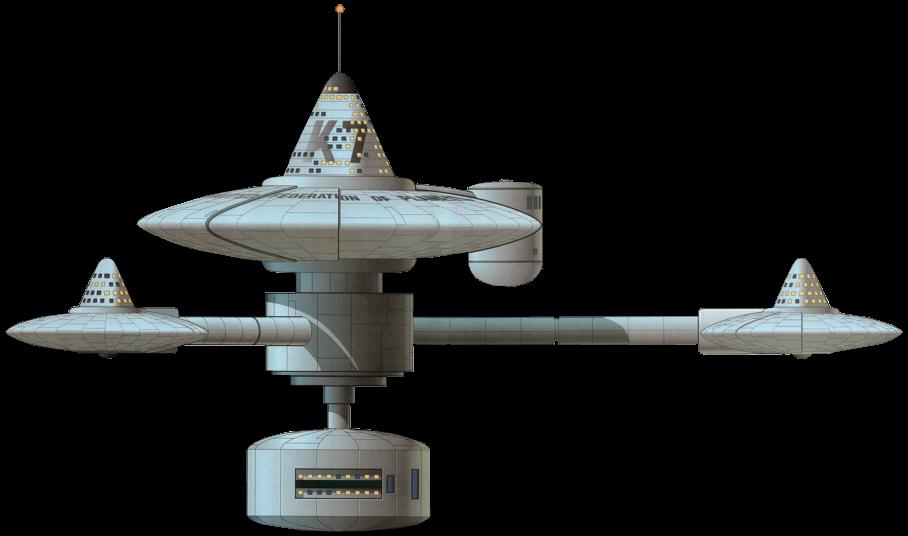 Adventure Thru Inner Space opened in Disneyland in 1967 as part of the New
Tomorrowland project. It occupied the space that previously housed the 20,000
Leagues Under the Sea walk-through and the Monsanto Hall of Chemistry. It closed
in 1986. The space is now occupied by Star Tours.
Adventure Thru Inner Space opened in Disneyland in 1967 as part of the New
Tomorrowland project. It occupied the space that previously housed the 20,000
Leagues Under the Sea walk-through and the Monsanto Hall of Chemistry. It closed
in 1986. The space is now occupied by Star Tours.
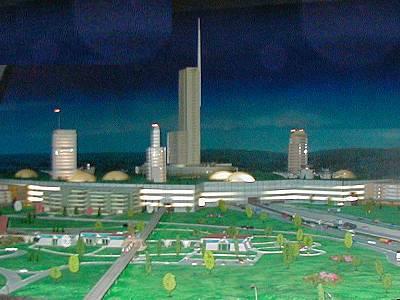
 Disney considered E.P.C.O.T. to be the most interesting and important part of
Disney World. It was intended to house about 20,000 inhabitants, as well as
establish a nearby industrial park. A large mall-like structure in the middle
of the proposed community was to feature offices, themed shopping areas resembling
European cities, and host a large hotel that towered over the rest of the structure.
Surrounding this, the proposal featured individual housing for those working in
the city center. Such housing was to radiate out from the center, much like the
spokes of a wheel.
Waltopia Transportation
Disney considered E.P.C.O.T. to be the most interesting and important part of
Disney World. It was intended to house about 20,000 inhabitants, as well as
establish a nearby industrial park. A large mall-like structure in the middle
of the proposed community was to feature offices, themed shopping areas resembling
European cities, and host a large hotel that towered over the rest of the structure.
Surrounding this, the proposal featured individual housing for those working in
the city center. Such housing was to radiate out from the center, much like the
spokes of a wheel.
Waltopia Transportation
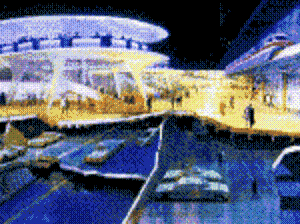 Connecting the living quarters with the center along those "spokes," the project
was to feature new modes of transportation. Short-distance travel, such as citizens
commuting to work, was to be taken care of by "people movers," a concept that
involved railed carts that never stopped and were to offer a fast and convenient
transportation. The people movers can now be found in Disney's Magic Kingdom,
albeit simply as a "ride" and not the everyday mode of transportation they were
to be at E.P.C.O.T.
A lot of the proposed aspects of E.P.C.O.T. have found their ways into aspects of
our lives, albeit not in the all-encompassing way Disney intended.
Disney proposed a self-contained community that would feature a homey, "happy"
atmosphere. Today, many of us live in gated communities that promise just that.
The mall-like city center proposed can now be found in virtually every American city.
Disney intended E.P.C.O.T. to be a "happy" community that offered equality to all.
It did, however, limit the personal freedom of those who did not agree with the
established rules. In that regard, modern America is also on the way to representing
what E.P.C.O.T. was to be. (EPCOT)
Walt Disney Plans EPCOT in Florida
Connecting the living quarters with the center along those "spokes," the project
was to feature new modes of transportation. Short-distance travel, such as citizens
commuting to work, was to be taken care of by "people movers," a concept that
involved railed carts that never stopped and were to offer a fast and convenient
transportation. The people movers can now be found in Disney's Magic Kingdom,
albeit simply as a "ride" and not the everyday mode of transportation they were
to be at E.P.C.O.T.
A lot of the proposed aspects of E.P.C.O.T. have found their ways into aspects of
our lives, albeit not in the all-encompassing way Disney intended.
Disney proposed a self-contained community that would feature a homey, "happy"
atmosphere. Today, many of us live in gated communities that promise just that.
The mall-like city center proposed can now be found in virtually every American city.
Disney intended E.P.C.O.T. to be a "happy" community that offered equality to all.
It did, however, limit the personal freedom of those who did not agree with the
established rules. In that regard, modern America is also on the way to representing
what E.P.C.O.T. was to be. (EPCOT)
Walt Disney Plans EPCOT in Florida
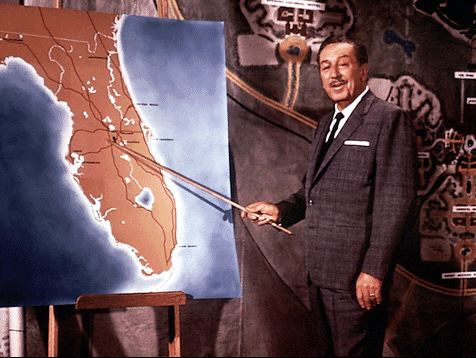 Disturbed by the strip culture that had grown up around Disneyland in California,
Walt hoped to prevent such unsightliness around his next theme park in Florida by
creating a "buffer zone." In a private jet, Walt flew over Florida several times in
the early 1960s scouting locations. When he failed to secure his first choice land
in the Panhandle, he settled on a large tract in central Florida. Over a period of
several months in 1964 and using phony company names to avoid paying inflated prices
to those looking to profit off the Disney name, Walt purchased thirty thousand acres
or forty-five square miles. The average price of the land was less than two hundred
dollars per acre . Some thirty years later thirty-six million people from around the
world visit Disney World each year.
In the covert operation that would have made the CIA proud, Disney started buying
central Florida real estate under names that gave no clue that Mickey was his backer.
By the time the Orlando Sentinel, the local newspaper, caught wind of it, the Wizard
of Diz had options on a parcel twice the size of Manhattan. But when he died so
did his dreams of the Utopian Society.
In 1984, Michael Eisner, having recently taken the helm as Disney's Chairman and CEO,
established the Disney Development Company (DDC) with the mission of developing the
remaining twenty-eight thousand acres of land still surrounding Disney World in Orlando
Walt's plan for a buffer zone proved unsuccessful. The highway system leading to Disney
World was a liability due to its visual clutter, crass commercialism, and for the many
opportunities for consumers to spend money outside of Disney's property.
Disturbed by the strip culture that had grown up around Disneyland in California,
Walt hoped to prevent such unsightliness around his next theme park in Florida by
creating a "buffer zone." In a private jet, Walt flew over Florida several times in
the early 1960s scouting locations. When he failed to secure his first choice land
in the Panhandle, he settled on a large tract in central Florida. Over a period of
several months in 1964 and using phony company names to avoid paying inflated prices
to those looking to profit off the Disney name, Walt purchased thirty thousand acres
or forty-five square miles. The average price of the land was less than two hundred
dollars per acre . Some thirty years later thirty-six million people from around the
world visit Disney World each year.
In the covert operation that would have made the CIA proud, Disney started buying
central Florida real estate under names that gave no clue that Mickey was his backer.
By the time the Orlando Sentinel, the local newspaper, caught wind of it, the Wizard
of Diz had options on a parcel twice the size of Manhattan. But when he died so
did his dreams of the Utopian Society.
In 1984, Michael Eisner, having recently taken the helm as Disney's Chairman and CEO,
established the Disney Development Company (DDC) with the mission of developing the
remaining twenty-eight thousand acres of land still surrounding Disney World in Orlando
Walt's plan for a buffer zone proved unsuccessful. The highway system leading to Disney
World was a liability due to its visual clutter, crass commercialism, and for the many
opportunities for consumers to spend money outside of Disney's property. 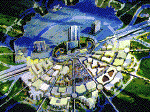
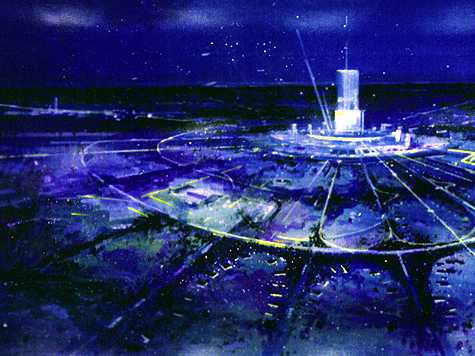 When is a planned community too planned? Some of the exhibits displayed at the 1939
World's Fair such as Democracity and Futurama influenced many American community
planners. The Levittown and Greenbelt projects followed the same guidelines of community
that the 1939 World's Fair introduced. These are two of the more well known Garden City
projects that took many families away from big cities and brought them to the peace and
tranquility of the suburbs. On February 2nd, 1967, Walter Elias Disney announced the
plans to create a domed community. This community would be known as the Experimental
Prototype Community of Tomorrow [EPCOT]. In this note, I will discuss how Walt Disney
planned to create his perfect community, his Waltopia. Disney's experimental EPCOT
community attempted to be the city of the future by first providing a controlled climate,
second by incorporating many of the garden city concepts, and thirdly by creating a
transportation system that brought people back as pedestrians.
Walt Disney, EPCOT MAP, Orlando, Florida
When is a planned community too planned? Some of the exhibits displayed at the 1939
World's Fair such as Democracity and Futurama influenced many American community
planners. The Levittown and Greenbelt projects followed the same guidelines of community
that the 1939 World's Fair introduced. These are two of the more well known Garden City
projects that took many families away from big cities and brought them to the peace and
tranquility of the suburbs. On February 2nd, 1967, Walter Elias Disney announced the
plans to create a domed community. This community would be known as the Experimental
Prototype Community of Tomorrow [EPCOT]. In this note, I will discuss how Walt Disney
planned to create his perfect community, his Waltopia. Disney's experimental EPCOT
community attempted to be the city of the future by first providing a controlled climate,
second by incorporating many of the garden city concepts, and thirdly by creating a
transportation system that brought people back as pedestrians.
Walt Disney, EPCOT MAP, Orlando, Florida
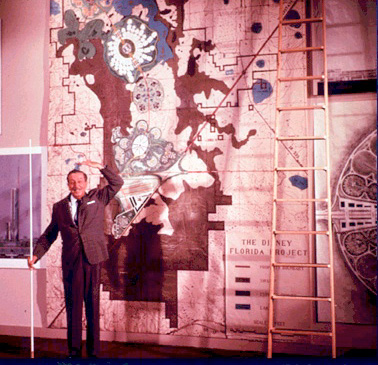 The initial plan for EPCOT was to have a city that was built in concentric circles,
much like the Garden City of to-morrow that Ebenezer Howard envisioned in 1898. The
city as a whole would cover over 1,000 acres of land and of that 1,000 acres 50 of
them would be enclosed by a dome that created the perfect air-conditioned temperature
year round. The dome that surrounded the heart of the city provided a controlled climate
for all of the residents and visitors and protected them from the elements of the outside
world. Not only did the dome provide protection and climate control, but it would enable
authoritative control. As both a model community and a laboratory, the dome seemed
designed to keep subjects of a massive experiment in controlled scenarios for research.
Part of the experiment included the control of who lived in the community and how the
city would look and be governed. The look of the city and the layout of the enclosed
communities looked strikingly similar to past garden city projects.
Walt Disney, EPCOT, A Planned Community, with Commerce at its Hub.
The initial plan for EPCOT was to have a city that was built in concentric circles,
much like the Garden City of to-morrow that Ebenezer Howard envisioned in 1898. The
city as a whole would cover over 1,000 acres of land and of that 1,000 acres 50 of
them would be enclosed by a dome that created the perfect air-conditioned temperature
year round. The dome that surrounded the heart of the city provided a controlled climate
for all of the residents and visitors and protected them from the elements of the outside
world. Not only did the dome provide protection and climate control, but it would enable
authoritative control. As both a model community and a laboratory, the dome seemed
designed to keep subjects of a massive experiment in controlled scenarios for research.
Part of the experiment included the control of who lived in the community and how the
city would look and be governed. The look of the city and the layout of the enclosed
communities looked strikingly similar to past garden city projects.
Walt Disney, EPCOT, A Planned Community, with Commerce at its Hub.
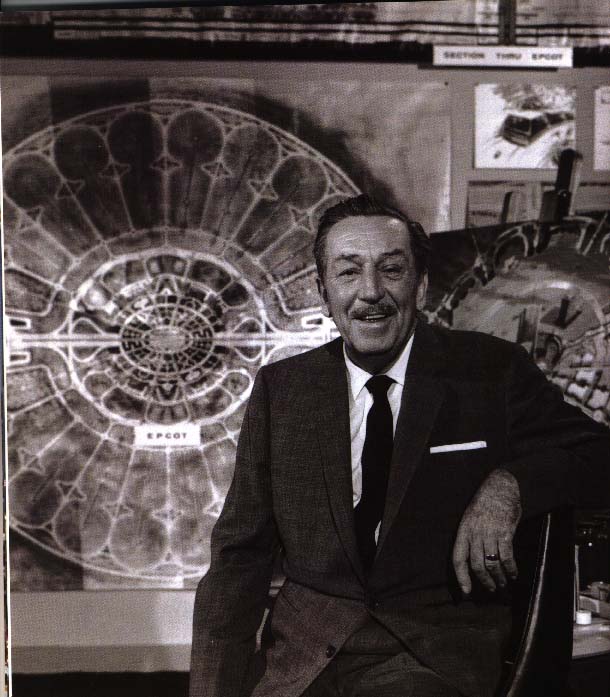 The similarities between Disney's dream and that of Ebenezer Howard are striking.
Howard's Garden city was designed in concentric circles with the center of all the
circles being a large garden and park that was encircled by a "Crystal Palace." In
EPCOT, rings that formed the concentric layout of the city would divide the town. The
outer-most circle would consist of the most modern houses of the time, and "would
perpetually be remodeled to incorporate the latest technology" (Waltopia.com, 1999).
The middle ring would consist of a massive green belt that would include churches,
playgrounds, and schools. The innermost ring, and the most spectacular of all would
be enclosed by a dome and would provide immediate access to the center of town. The
hub of the innermost ring would be accented by an enormous and modern 30-story hotel
hat would act as the center of commerce for the city, much like the Crystal Palace
did for Ebenezer's Garden City. As with most planned communities of the time such as
Levittown and the Greenbelt Programs, the community members would be selected in order
to form the most ideal society as possible and isolate them from the dangers of
traditional public life. As Walt Disney himself once stated, "In EPCOT there will be
no slum areas because we won't let them develop." It seemed that Walt Disney planned
to create a perfect garden city, with perfect people who lived perfect lives, but the
machine that manifested itself in the form of control and authority was unavoidable.
It did not seem that Disney made a strong attempt to hide the machine in his garden.
His machine helped the people of the community by enabling them to commute throughout
the garden with ease and efficiency.
Envisioned Epcot City Building
The similarities between Disney's dream and that of Ebenezer Howard are striking.
Howard's Garden city was designed in concentric circles with the center of all the
circles being a large garden and park that was encircled by a "Crystal Palace." In
EPCOT, rings that formed the concentric layout of the city would divide the town. The
outer-most circle would consist of the most modern houses of the time, and "would
perpetually be remodeled to incorporate the latest technology" (Waltopia.com, 1999).
The middle ring would consist of a massive green belt that would include churches,
playgrounds, and schools. The innermost ring, and the most spectacular of all would
be enclosed by a dome and would provide immediate access to the center of town. The
hub of the innermost ring would be accented by an enormous and modern 30-story hotel
hat would act as the center of commerce for the city, much like the Crystal Palace
did for Ebenezer's Garden City. As with most planned communities of the time such as
Levittown and the Greenbelt Programs, the community members would be selected in order
to form the most ideal society as possible and isolate them from the dangers of
traditional public life. As Walt Disney himself once stated, "In EPCOT there will be
no slum areas because we won't let them develop." It seemed that Walt Disney planned
to create a perfect garden city, with perfect people who lived perfect lives, but the
machine that manifested itself in the form of control and authority was unavoidable.
It did not seem that Disney made a strong attempt to hide the machine in his garden.
His machine helped the people of the community by enabling them to commute throughout
the garden with ease and efficiency.
Envisioned Epcot City Building
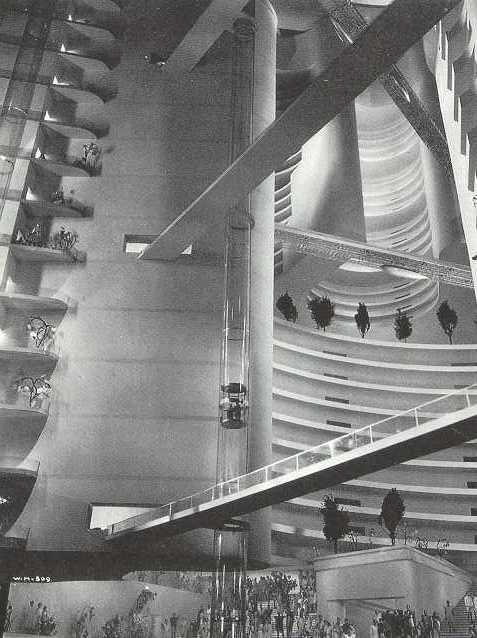 The transportation system that Disney had envisioned introduced some of the streamlining
technology that was displayed at the 1939 World's Fair. In order to enter the Futurama
display in the General Motors building in 1939, a "moving platform" took you on a ride
to the chairs that floated over the miniature city. In EPCOT this fantastic mode of
transportation was taken one step further by introducing the idea of "people movers."
People movers were trains or monorails that were one level above the ground that would
act as a form of mass public transit. With the people movers in place, there would be
practically no need for the automobile. Cars would still be present, but as Walt Disney
was quoted as saying, "the automobile is there, but still put people back as pedestrians
again." Transportation in EPCOT stood as a clear representation of how Walt Disney
planned to change the direction that General Motors implied for society in the 1939
World's Fair. Why would you need to leave EPCOT if you had everything necessary for
happiness in your own community? This idea was a very strong representation of the
contradiction of two worlds of tomorrow that were envisioned.
In this note, I have focused on three concepts that Walt Disney used to plan his own
Utopia. The first was the concept of having a controlled climate for all citizens of
the community, the second was the construction of a garden city, and the third and final
was the creation of a transportation system that allowed community members to travel
freely within the bounds of the community. Walt Disney's Experimental Prototype Community
of Tomorrow was planned to test solutions to problems that riddled society at that time.
Disney died before his planned community could ever begin construction, but as we all
know EPCOT did end up being built in 1979, but for reasons other than social living. The
authority and control that EPCOT represented clearly exemplified a true heterotopias. The
heterotopias of EPCOT was truly intended to fix the problems that societies faced at the
time by not just looking toward the future, but by living in it.
-------------------------------------------------------------------------------------
The transportation system that Disney had envisioned introduced some of the streamlining
technology that was displayed at the 1939 World's Fair. In order to enter the Futurama
display in the General Motors building in 1939, a "moving platform" took you on a ride
to the chairs that floated over the miniature city. In EPCOT this fantastic mode of
transportation was taken one step further by introducing the idea of "people movers."
People movers were trains or monorails that were one level above the ground that would
act as a form of mass public transit. With the people movers in place, there would be
practically no need for the automobile. Cars would still be present, but as Walt Disney
was quoted as saying, "the automobile is there, but still put people back as pedestrians
again." Transportation in EPCOT stood as a clear representation of how Walt Disney
planned to change the direction that General Motors implied for society in the 1939
World's Fair. Why would you need to leave EPCOT if you had everything necessary for
happiness in your own community? This idea was a very strong representation of the
contradiction of two worlds of tomorrow that were envisioned.
In this note, I have focused on three concepts that Walt Disney used to plan his own
Utopia. The first was the concept of having a controlled climate for all citizens of
the community, the second was the construction of a garden city, and the third and final
was the creation of a transportation system that allowed community members to travel
freely within the bounds of the community. Walt Disney's Experimental Prototype Community
of Tomorrow was planned to test solutions to problems that riddled society at that time.
Disney died before his planned community could ever begin construction, but as we all
know EPCOT did end up being built in 1979, but for reasons other than social living. The
authority and control that EPCOT represented clearly exemplified a true heterotopias. The
heterotopias of EPCOT was truly intended to fix the problems that societies faced at the
time by not just looking toward the future, but by living in it.
-------------------------------------------------------------------------------------
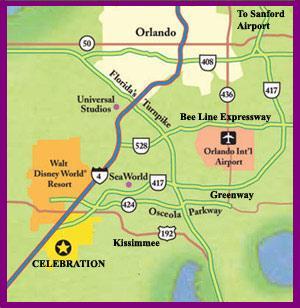
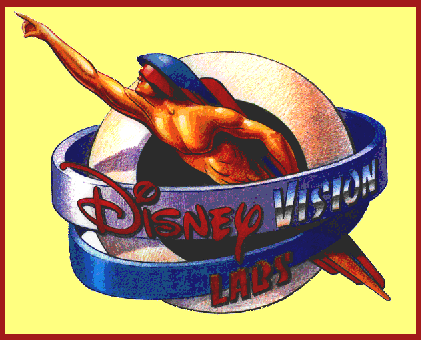
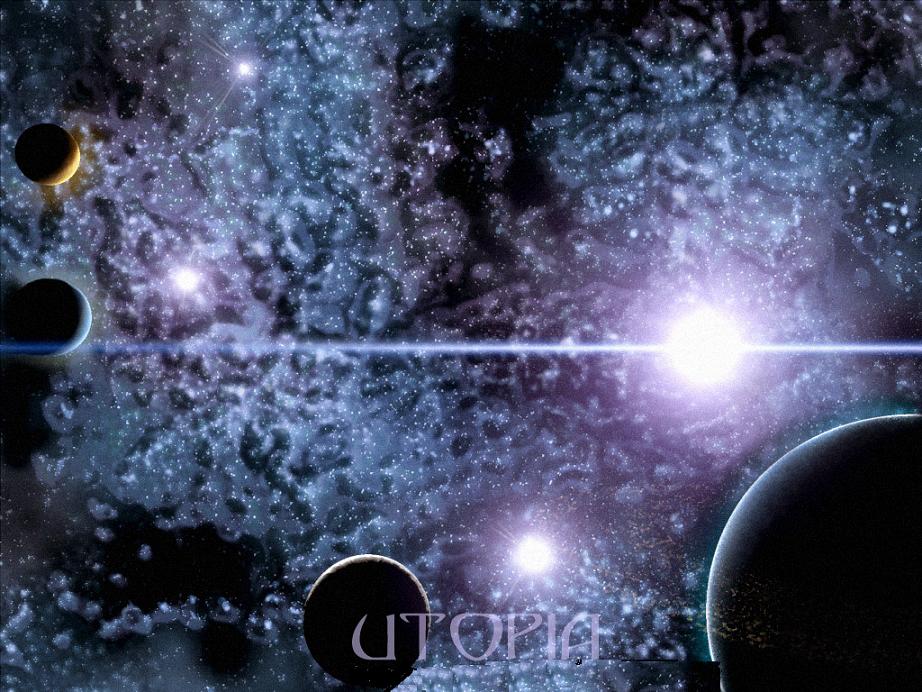
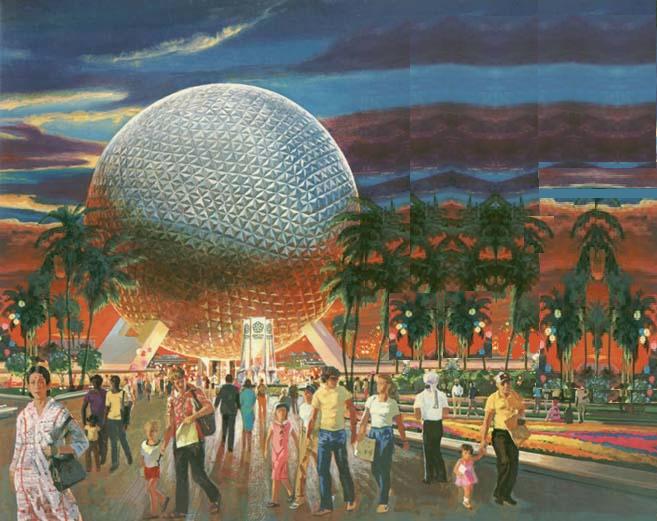 "EPCOT will be an experimental prototype community of tomorrow that will take its
cue from the new ideas and new technologies that are now emerging from the creative
centers of American industry. It will be a community of tomorrow that will never be
completed, but will always be introducing and testing and demonstrating new materials
and systems. And EPCOT will always be a showcase to the world for the ingenuity and
imagination of American free enterprise."
"I don't believe there's a challenge anywhere in the world that's more important to
people everywhere than finding solutions to the problems of our cities. But where do
we begin... how do we start answering this great challenge? Well, we're convinced we
must start answering the public need. And the need is for starting from scratch on
virgin land and building a special kind of new community that will always be in a
state of becoming. I twill never cease to be a living blueprint of the future, where
people actually live a life they can't find anywhere else in the world."
"I only hope that we don't lose sight of one thing -
that it was all started by a mouse."
"EPCOT will be an experimental prototype community of tomorrow that will take its
cue from the new ideas and new technologies that are now emerging from the creative
centers of American industry. It will be a community of tomorrow that will never be
completed, but will always be introducing and testing and demonstrating new materials
and systems. And EPCOT will always be a showcase to the world for the ingenuity and
imagination of American free enterprise."
"I don't believe there's a challenge anywhere in the world that's more important to
people everywhere than finding solutions to the problems of our cities. But where do
we begin... how do we start answering this great challenge? Well, we're convinced we
must start answering the public need. And the need is for starting from scratch on
virgin land and building a special kind of new community that will always be in a
state of becoming. I twill never cease to be a living blueprint of the future, where
people actually live a life they can't find anywhere else in the world."
"I only hope that we don't lose sight of one thing -
that it was all started by a mouse."
